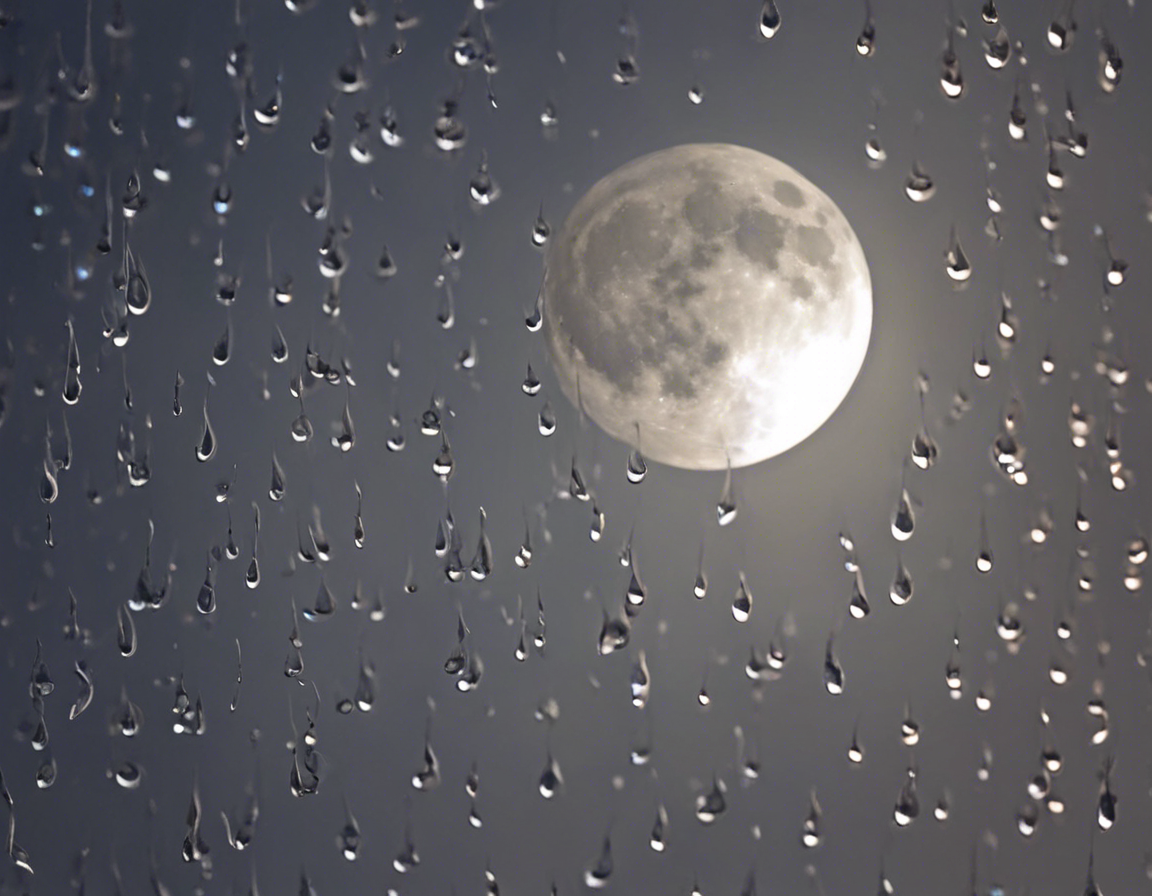
Moon Drops: A Unique Phenomenon
Introduction
Have you ever gazed up at the night sky and noticed the enchanting phenomenon of moon drops? These mysterious and captivating occurrences have captured the imagination of people for centuries, inspiring myths, legends, and even scientific exploration. In this blog post, we will delve into the mystique of moon drops, unraveling the science behind them and exploring the cultural significance they hold across different societies.
What are Moon Drops?
Moon drops, also known as moon tears or moon rain, are a rare and fascinating meteorological event characterized by the appearance of droplets of water seemingly falling from a clear, cloudless sky. These droplets are often described as shimmering and luminescent, giving them an otherworldly quality that has long intrigued observers.
The Science Behind Moon Drops
The phenomenon of moon drops is typically associated with dew, which forms on surfaces such as grass or leaves during the night when the temperature drops and moisture in the air condenses. When the sun rises in the morning, the dew droplets evaporate, sometimes creating the illusion of droplets falling from the sky. This effect is especially pronounced on nights with a bright, full moon, hence the association with lunar activity.
Cultural Significance
Across cultures and throughout history, moon drops have been imbued with symbolism and meaning. In many traditions, they are seen as a sign of good luck or divine favor, with some believing that collecting moon drops can bring blessings or protection. In folklore and mythology, these ethereal droplets are often associated with magic, mystery, and the supernatural, adding to their allure and enigmatic nature.
The Intersection of Science and Myth
The convergence of scientific explanation and cultural interpretation when it comes to moon drops exemplifies the beauty of human perception and storytelling. While we now understand the meteorological process behind this phenomenon, there is still room for wonder and imagination in how we perceive and experience the natural world around us.
Practical Implications
From a practical standpoint, moon drops can have tangible benefits for agriculture and gardening. The moisture they provide can help nourish plants and crops, especially in arid regions where water is scarce. By understanding the conditions that lead to the formation of moon drops, farmers and gardeners can harness this natural phenomenon to support their livelihoods.
Exploring the Enchantment
As we continue to unravel the mysteries of the cosmos and deepen our understanding of the natural forces at play on Earth, it is important not to lose sight of the magic and wonder that surround us. Moon drops serve as a reminder of the beauty and complexity of the world we inhabit, inviting us to look up at the night sky with a sense of awe and appreciation.
FAQs (Frequently Asked Questions)
-
Are Moon Drops Harmful?
Moon drops are essentially dew droplets and are not harmful in any way. In fact, they can be beneficial for plants and ecosystems. -
Can Moon Drops Only be Seen at Night?
While moon drops are most commonly observed at night, they can also occur during the early morning hours before sunrise. -
Do Moon Drops Have a Distinctive Appearance?
Moon drops are often described as shimmering and luminescent, resembling glistening pearls or tiny diamonds. -
Are Moon Drops Connected to Lunar Phases?
Moon drops are often associated with bright, full moons, but they can occur at any time when the conditions are right for dew formation. -
Can Moon Drops be Collected and Stored?
While it is possible to collect moon drops, they are essentially just dew and will eventually evaporate like regular water droplets. -
Do Different Cultures Have Unique Beliefs About Moon Drops?
Yes, various cultures have their interpretations of moon drops, ranging from symbols of good fortune to omens of change or transformation. -
How Can Moon Drops Inspire Art and Creativity?
The enchanting nature of moon drops has inspired artists, writers, and creators throughout history, serving as a muse for poetry, painting, and other forms of expression. -
Are Moon Drops a Rare Phenomenon?
While moon drops may not occur as frequently as regular dew, they are not considered extremely rare and can be observed under the right conditions. -
Can Moon Drops Reflect Different Colors?
Moon drops may appear to reflect various hues under the light of the moon, creating a dazzling display that adds to their mystical allure. -
How Can I Learn More About Moon Drops?
Exploring scientific literature on dew formation and meteorological phenomena can provide further insights into the occurrence of moon drops and similar events in nature.
